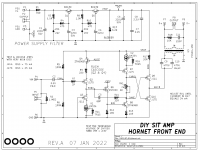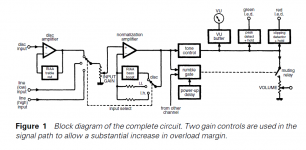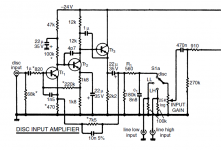Cal,
A lubricant not only is used to reduce friction but often more important to reduce wear.
A lubricant not only is used to reduce friction but often more important to reduce wear.
Be is self lubricating so gets used a lot. For bearings like that no idea. Howie should know as a card carrying tribologist
Yes Ed, and when I read vacuum, I was thinking gravity. Mind is too full these days. Two brain cells is not enough power in today's world I am finding.
Isn't that essentially the same thing Ed? I know dry lubrication is great for high heat but what about cold? Without molecules that stiffen or slow with a temperature drop...reduce friction but often more important to reduce wear.
In normal earthbound use bearings will have much less friction when run dry and clean. However in some cases they will wear noticeably in minutes! A small bit of lubricant dramatically reduces wear but does increase friction.
Ask anyone who ever raced soapbox derby cars. Clean and dry much lower rolling resistance. Five minutes of run time the bearings should be scrap!
FYI there are some extremes of low rolling resistance vehicles.
https://www.cmu.edu/buggy/
Ask anyone who ever raced soapbox derby cars. Clean and dry much lower rolling resistance. Five minutes of run time the bearings should be scrap!
FYI there are some extremes of low rolling resistance vehicles.
https://www.cmu.edu/buggy/
Last edited:
Bill, I lost my STLE card a few years ago, but I have found bearings in vacuum and at cryogenic temperatures are quite different from bearings at ambient temperature and pressures. Typically they rely on dry coatings such as ceramics or nitrides and have very carefully controlled material coefficient of expansions to control clearances. In vacuum applications at close to ambient temperatures many bearings are loaded with high-vacuum grease like Krytox or Apezion, we used both. I found Apezion to have better adhesion but faster decomposition at elevated temperatures, but both worked well.
I understand the bearings on Webb are manufactured by both Timken and others, and feature a proprietary dry coating to inhibit cold-welding. I've seen cold-welding happen at room temperatures in a vacuum and it is remarkable! Once the air and moisture film is removed from between two pieces of metal or other substances, they can molecularly weld under certain conditions, especially if they are in differential movement so any remaining oxide film is breached and the two base metals can come intimate contact. To understand this phenomenon better I will repeat my recommendation of the book "Molecular Adhesion and it's Applications" by Kendall. This was one of the reads that made light go on in my otherwise dim bulb.
I don't mind that I am no longer servicing and operating high vacuum systems nor helium cryo-coolers.... they are maintenance hogs and physics gets weird, which I enjoy but many operators are not interested enough to learn and adapt, leaving the resulting mess to the engineers (um, that's me, Chet) to clean up.
Cheers,
Howie
I understand the bearings on Webb are manufactured by both Timken and others, and feature a proprietary dry coating to inhibit cold-welding. I've seen cold-welding happen at room temperatures in a vacuum and it is remarkable! Once the air and moisture film is removed from between two pieces of metal or other substances, they can molecularly weld under certain conditions, especially if they are in differential movement so any remaining oxide film is breached and the two base metals can come intimate contact. To understand this phenomenon better I will repeat my recommendation of the book "Molecular Adhesion and it's Applications" by Kendall. This was one of the reads that made light go on in my otherwise dim bulb.
I don't mind that I am no longer servicing and operating high vacuum systems nor helium cryo-coolers.... they are maintenance hogs and physics gets weird, which I enjoy but many operators are not interested enough to learn and adapt, leaving the resulting mess to the engineers (um, that's me, Chet) to clean up.
Cheers,
Howie
Speaking of Webb, I have been watching this page since launch: Where Is Webb? and while many other things humans are doing diminish our value to ourselves, the planet and ultimately the universe, Webb is one hell of an achievement. It's commissioning is nothing short of an amazing feat in itself, and it has now reached operational status, just a matter of final fine alignments and our biggest eye into the universe is operational. Now THAT is some engineering!
Cheers!
Howie
Cheers!
Howie
Meanwhile trying to share audio content: I've been installing a 920-960 MHz spread spectrum data backhaul at one great freeform radio station (ongoing) due to AT&T discontinuing DSL service as they abandon as many copper services as possible. This allows them to lay off as many field technicians as they can to show better quarterly returns to sharehoders. They are ostensibly replacing these accounts with wireless internet appliances, and we tried their commercial Nighthawk device but it was too bursty. When it was connected it showed >40 MB/s DL and 5 MB/s UL but...and a big butt it was: it streams fine for 15 seconds to a minute or so, then has seconds of no data transfers despite solid connectivity...and then back on the 40 MB/s train. Unsuitable for real-time audio and our AoIP box hiccups even at max buffer...therefore the need for the microwave data link/network bridge.
Even more audio-oriented, I've been designing a tiny battery-powered microphone preamp/compressor for amateur radio use utilizing the AD SSM2167 chip which only draws ~2.5 mA at 5 V. I spent quite a bit of time looking at micropower opamps for output buffering to find one with simultaneous high output current and low Iq, and it is not an easy one to find! I ended compromising on the OPA1692 which has nice audio specs, only 650 uA/channel Iq and +/- 30 mA Iout. Anyone have a suggestion for a different part better fitting the requirement?
Also, since this is The Black Hole and just about anything goes...what have y'all been doing in audio recently?
TIA
Howie
Even more audio-oriented, I've been designing a tiny battery-powered microphone preamp/compressor for amateur radio use utilizing the AD SSM2167 chip which only draws ~2.5 mA at 5 V. I spent quite a bit of time looking at micropower opamps for output buffering to find one with simultaneous high output current and low Iq, and it is not an easy one to find! I ended compromising on the OPA1692 which has nice audio specs, only 650 uA/channel Iq and +/- 30 mA Iout. Anyone have a suggestion for a different part better fitting the requirement?
Also, since this is The Black Hole and just about anything goes...what have y'all been doing in audio recently?
TIA
Howie
Here's my most recent project. Schematic date + PCB layout time + PCB fab time + assembly time + test time means it was completed last month.
Q9-Q10 are a complementary JFET output with no degeneration resistors; works fine with no detectable thermal instability. Had fun with all the cascodes too.
_
Q9-Q10 are a complementary JFET output with no degeneration resistors; works fine with no detectable thermal instability. Had fun with all the cascodes too.
_
Attachments
Mainly getting embarassed about my lack of progress on about 4 fronts. Thanks to Hans I have an MC stage again and next step is switchable MC/MM which only requires me to make 3 cables up. Then the fun can start!Also, since this is The Black Hole and just about anything goes...what have y'all been doing in audio recently?
Anyone going to the High End Munich 2022, May 19 to 22?
https://www.highendsociety.de/high-end-44.html
https://www.highendsociety.de/high-end-44.html
https://www.stereophile.com/content/emt-128-phono-preamplifier-measurements
Another expensive phono stage with pathetic overload margins...
Another expensive phono stage with pathetic overload margins...
Yikes! I really like that machined case, though...if only the Vendetta or Ono preamp was in such a case....it makes me want to spend too much money on a block of aluminum and transplant my xOno clone preamp into it...if only I had the time...when I retire I guess.
Cheers!
Howie
Cheers!
Howie
The sad EMT unit overload margins as stated in the Stereophile review:
"Even at the lower gain setting, the EMT 128's overload margins were on the low side, at 9dB at 20Hz, 8.3dB at 1kHz, and 3.5dB at 20kHz, all ref. the nominal MC level of 1kHz at 500µV. These margins were all reduced by 6dB at the higher gain setting."
Here are the specs for the Pass xOno (misstated as Aleph, although I think it is the same circuit) in it's Stereophile review:
"The Aleph Ono's MM phono overload margin is good; using an unequalized input, 1% THD+noise was reached at an input of 203mV (32.2dB overload margin ref. 5mV) at 1kHz, 1.9V (31.5dB) at 20kHz, and 17.3 mV (30.8dB) at 20Hz. The corresponding MC figures are 19.8mV (32dB overload margin ref. 500µ;V) at 1kHz, 201mV (32.1dB) at 20kHz, and 1.7mV (30.6dB) at 20Hz—all excellent figures."
And the Pre I would love to own, the Vendetta has fabulous specs including overload margin, once again here from the Stereophile review:
"The measured overload margins (ref. 0.5mV at 1kHz) were among the best I have ever measured, at 32.75dB at 20Hz, 31.6dB at 1kHz, and 29.4dB at 20kHz. The output level at the 1% clipping point was more than 15V! To sum up, this superbly uncompromised measured performance is a tribute to the Vendetta's designer."
Weird EMT would have released a circuit with that performance deficit. And at over 4 times the cost of the Pass in it's machined aluminum case...go figure.
Cheers,
Howie
"Even at the lower gain setting, the EMT 128's overload margins were on the low side, at 9dB at 20Hz, 8.3dB at 1kHz, and 3.5dB at 20kHz, all ref. the nominal MC level of 1kHz at 500µV. These margins were all reduced by 6dB at the higher gain setting."
Here are the specs for the Pass xOno (misstated as Aleph, although I think it is the same circuit) in it's Stereophile review:
"The Aleph Ono's MM phono overload margin is good; using an unequalized input, 1% THD+noise was reached at an input of 203mV (32.2dB overload margin ref. 5mV) at 1kHz, 1.9V (31.5dB) at 20kHz, and 17.3 mV (30.8dB) at 20Hz. The corresponding MC figures are 19.8mV (32dB overload margin ref. 500µ;V) at 1kHz, 201mV (32.1dB) at 20kHz, and 1.7mV (30.6dB) at 20Hz—all excellent figures."
And the Pre I would love to own, the Vendetta has fabulous specs including overload margin, once again here from the Stereophile review:
"The measured overload margins (ref. 0.5mV at 1kHz) were among the best I have ever measured, at 32.75dB at 20Hz, 31.6dB at 1kHz, and 29.4dB at 20kHz. The output level at the 1% clipping point was more than 15V! To sum up, this superbly uncompromised measured performance is a tribute to the Vendetta's designer."
Weird EMT would have released a circuit with that performance deficit. And at over 4 times the cost of the Pass in it's machined aluminum case...go figure.
Cheers,
Howie
And why use vacuum valves, but not take advantage of their high voltage capability? There's no particular noise penalty to keeping 30dB ref: 0VU of 5cm/s of headroom with B+ supplies comfortably over 200VDC. It's a puzzlement.
All good fortune,
Chris
All good fortune,
Chris
The explanation is simple but hard to understand. Picasso was a great artist and so was Rembrandt. Different flavors for different experts.
The preamp under discussion is not a Rembrandt!
Ever hear a piece of music that leaves you wondering, say really heavy metal or perhaps the very recently deceased George Crumb’s “Ancient Voices of Children?” Both are still music to some.
The preamp under discussion is not a Rembrandt!
Ever hear a piece of music that leaves you wondering, say really heavy metal or perhaps the very recently deceased George Crumb’s “Ancient Voices of Children?” Both are still music to some.
One advantage of tubes could be soft clipping and fast overload recovery as opposed to hard clipping with semiconductors.
But whether this will be the case for the EMT preamp ??
A possible disadvantage is that most tubes don't live forever, so who will take care of that and at what costs ?
Apart from the Aleph Ono, there are quite a number of preamps with OM's above 30dB, a sound margin for trouble-free digesting scratches and other anomalies.
Hans
But whether this will be the case for the EMT preamp ??
A possible disadvantage is that most tubes don't live forever, so who will take care of that and at what costs ?
Apart from the Aleph Ono, there are quite a number of preamps with OM's above 30dB, a sound margin for trouble-free digesting scratches and other anomalies.
Hans
Something about those amplitude scales bothers me. Sure that's not 47 (~33.4 dB)? Assuming 30 dB of 1k preamp gain and 47 dB overload, that's +77 dB re: 5 mVrms = 35.4 Vrms, but you won't get 35Vpp from a single 24V rail, much less 35Vrms. But 30 dB gain plus gain of 47 is 63.4 dB gain re: 5 mV, and that's 8.745 Vrms. THAT is right at 24 Vpp, and in the ballpark of what can be achieved with a single 24V rail.D. Self's "Advanced Preamplifier" (Nov. 1976) had an overload margin of 47 dB; naturally, given the date, the preamp was designed for MM cartridges. Discrete BJT circuitry.
_
- Home
- Member Areas
- The Lounge
- The Black Hole......



